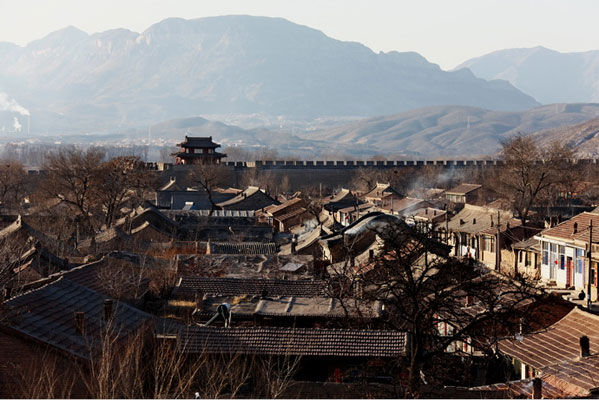Time lost and regained at the Crow Post House
Updated: 2012-03-05 13:12
(CRI)
|
|||||||||||
 |
|
Clusters of low-rise houses in the embrace of the city walls are all that remain of the Crow Post House village in Hebei province. [Photo/travel.com.cn] |
The Crow Post House village gives onlookers the false impression that it is deserted, and though residents remain in the village, their situation is far different from that of the past. Nearly all of the current residents are senior citizens or children; a stark contrast to the situation some 700 years ago when the village was considered a crucial strategic post.
Regarded as a major stop for horse riding messengers and traveling officials during the Ming dynasty, the village expanded from a few simple inns to the largest Post House within range of the nation's capital; as the village's military and postal significance increased.
Located in Hebei province, some 150 miles away from Beijing, it's as if time stands still in the Crow Post House village. Commercial tourism has not yet blighted the area, apart from an entrance fee of 30 yuan. But visitors will often find that they are free to wander into the village, especially if the person tasked with minding the entrance goes home early or is engaged in idle chitchat with his neighbors.
Taking in a panoramic view of the village, one will see that it is made up of clusters of low-rise clay houses huddled together in the embrace of the remaining city walls. The internal structure remains unchanged from that of its heyday, with two gate towers situated to the east and west, stables in the northwest and barns in the northeast. Five straight-cut streets, bordered by shops and warehouses, cross each other in four directions.
Until 1913, The Crow Post House village was a prosperous area where businessmen would regularly gather. Every year during the Spring Festival, the small village would be packed with people from nearby regions who would come to sample the village's sensational temple fairs. But after the introduction of the modern postal system, a gradual decline set in and the village stepped back from its earlier glory days.
Time has taken its toll on the village, but evidence remains of its glorious past; though a large part of its city walls and houses are now dilapidated. A small number of residents who still live here have rebuilt their homes with bricks and red tile roofs, which easily stand out among a spread of earthy colored houses.
However, the village has benefited from its weathered appearance. It has served as the backdrop of a succession of films including "A Chinese Odyssey", a popular comedy starring Stephen Chow.
There is not much to see in the village if you are looking for refurbished palaces and temples or well planned exhibitions, but every item and artifact that remains is steeped in history.
Today's Top News
President Xi confident in recovery from quake
H7N9 update: 104 cases, 21 deaths
Telecom workers restore links
Coal mine blast kills 18 in Jilin
Intl scholarship puts China on the map
More bird flu patients discharged
Gold loses sheen, but still a safe bet
US 'turns blind eye to human rights'
Hot Topics
Lunar probe , China growth forecasts, Emission rules get tougher, China seen through 'colored lens', International board,
Editor's Picks

|

|

|

|

|

|





